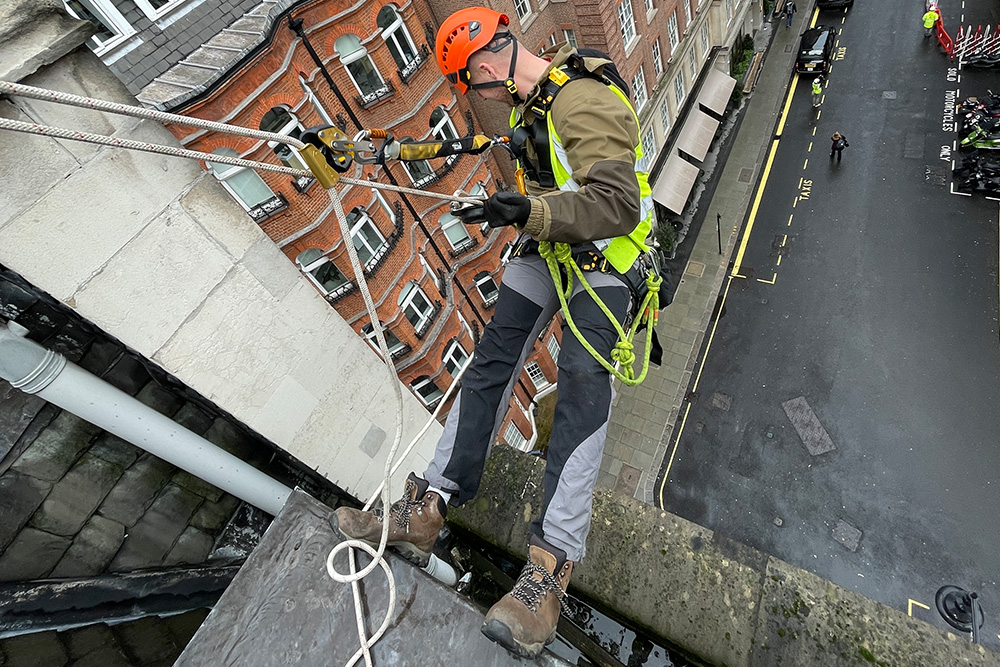In comparison to scaffolding, rope access minimizes disruptions by utilizing fewer tools and temporary work setups. Rope access procedures simply involve a team of skilled technicians arriving on-site with their equipment in vans, performing the necessary tasks, and leaving without leaving a trace. Unlike scaffolding, which requires a lasting structure until the work is completed and alters the building's appearance, potentially affecting residents' privacy or the public.
Cost Rope access offers a more cost-effective solution due to reduced equipment and time requirements compared to scaffolding.
Time While scaffolding structures are being assembled, rope access technicians are already in the air completing their tasks. Establishing secure anchorage and protective rigging for abseiling takes minutes, a stark contrast to the hours required for scaffold construction.
Safety Despite the inherent risks of being suspended in the air by ropes, rope access boasts a better safety record than scaffolding. Governed by bodies like IRATA, rope access maintains strict safety standards through rigorous policies and procedures. Whether it's roofing repairs or specialized render cleaning, rope access provides a more convenient and inherently safer alternative to scaffolding.
Flexibility Lastly, rope access stands out as a comprehensive method, reaching restricted areas that even advanced scaffolding structures may fail to access. After establishing a secure work system on the building, rope access technicians gain complete access without causing potential damage, even in areas lacking permanent anchor points. Their training allows them to set up portable anchor systems like deadweight anchors or abseiling A-frames, ensuring flexibility in various scenarios.


